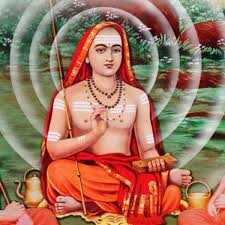THE GLORY OF VEDĀNTA, THE SCIENCE OF “NOT-TWO!”
Karl Jaspers (1883-1969) the famous Austrian existentialist philosopher once told Professor K. Satchidananda Murthy that, “there is no metaphysics superior to that of Shankara.”
Understanding “Pure Existence-Consciousness” is the subject-matter of Vedānta.
The Western philosophy mostly feels daunted explaining “pure” existence, and so does the modern science in explaining or understanding “pure” consciousness.
Vedānta handles both subjects (pure existence-consciousness) with aplomb. According to Vedānta, these two are not really two, but actually one entity. We experience “existence” as “consciousness” only; and we experience “consciousness” in the form of our felt sense of “being” or “existence.” This is denoted with the expressions: सदैव चिद, चिदेव सद: sadeva chida, chideva sada: Verily, existence is consciousness, and consciousness is existence.
Vedānta says existence-consciousness can only be “experienced” in relation to objects in the form of their name and form (nāma-rūpa). It cannot be “experienced” in its “pure” form devoid of name and form. Why? Because consciousness is the very Subject—and subject, by definition, cannot be objectified. And that Subject, says Vedānta, is “You”—the formless, nameless conscious-principle.
The great sage Yajñāvalkya conveyed this supreme understanding to his wife Maitreyī in his final instructions:
“Through what should one know THAT owing to which all this is known!” ~ Bṙhadāraṇyaka Upaniṣad 4.5.15
The pure witness-consciousness is the individual self (Sākshi Chaitanyam is the jivātmā) and the pure existence is the universal Self (Suddha-Satta-rupa is the Paramātmā). The great statements or equations of identity, mahāvākya-s, like “You are That,” Tatvamasi, and “I am That Infinite-Absolute,” Aham Brahmāsmi, declare their oneness.* These are like Einstein’s E = mc2.
“You are that” is the declaration of the teacher; “I am That” is the realization of the student. The experiential realization of this oneness/identity of the individual self (jivātmā) with the universal Self (Paramātmā) is called liberation, mokṣa or mukti, according to Vedānta. Once the adjectives “jiva” and “param” are removed, what remains is ātmā = Paramātmā. Attaining this understanding is liberation.
Like the tenth man in the story, it is discovering what one already is. Once this is understood–that i am essentially eternal, pure, and of the nature of consciousness and free (nitya-shuddha, buddha, mukta), one does not have to “do” anything extra to attain liberation. It is owning up to our status or attaining the ever-attained. Do we need any practice to realize that we are human beings?
Attaining this liberation is the ultimate end and purpose of human existence, according to Indian philosophy. Vedānta declares that this liberation is possible within this very lifetime.
There are only two “near-examples”** of the experience of objectless “pure” existence-consciousness:
- Space: although not strictly “pure” existence-consciousness, space is the nearest example. [Space has dimensions and has the property of sound; consciousness is utterly without any property and attributes]
- Deep Sleep: You obtaining/experiencing yourself in deep sleep is another “nearest” example of objectless pure-consciousness.
* & ** Based on Swami Paramarthananda, Discourses on Śrī Dakśiṇāmūrti Stotram, discourse # 10 of 16.


Recent Comments